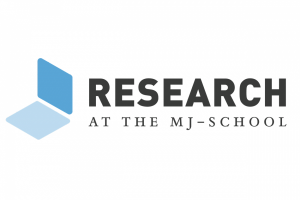Research Publication Roundup: December 2018

A vibrant and collaborative interdisciplinary research culture at the UNC Hussman School of Journalism and Media creates new knowledge, advances scholarship and helps reinvent media. Below is a list of recently published or presented scholarship by Hussman School faculty and students.
RECENT PUBLICATIONS
Target audience ratings of the likely impact of persuasive messages, known as perceived message effectiveness (PME), are commonly used during message development and selection. PME is also used to examine receptivity of messages after they are fully developed or deployed. Despite this, we know little about the conceptual and methodological characteristics of extant PME measures used in the literature. We conducted a systematic review of tobacco education video, print, and audio campaign studies to examine conceptual and methodological characteristics of PME measures. One hundred twenty-six PME measures from 75 studies conducted in 21 countries with more than 61,000 participants were reviewed. Results indicated considerable variability in measures’ focus on general perceptions of a message (i.e., message perceptions) vs. perceptions of expected message effects (i.e., effects perceptions). Considerable variability was also found on underlying persuasive constructs, use of referents, and referencing of behavior in PME items and measures. We conclude with several recommendations for future research on PME measurement and validation.
This study tested how media, family, and peer sources of health and beauty information predict indoor tanning (IT) beliefs and behavior. Participants: 210 undergraduate women at a state university in the southeastern United States. Respondents completed a survey about sources of health and beauty information, IT beliefs, and IT behavior. Correlations and a path model were used to test associations between variables. Friends were positively and family were negatively associated with positive outcome expectations, with mood enhancement beliefs positively predicting behavior. Reliance on news positively predicted appearance damage and immediate risk, which both predicted behavior. Reliance on social media was negatively associated with beliefs about immediate risks. Health and beauty information from social media and from friends may promote beliefs about tanning, while information from news or one’s family may reduce risky beliefs. Prevention efforts could leverage information sources to shift tanning beliefs and behavior.
Target audience ratings of the likely impact of persuasive messages, known as perceived message effectiveness (PME), are commonly used in health communication campaigns. However, applications of PME rely on a critical assumption—that is, that PME is a valid indicator of the likely effectiveness of messages. To examine the evidence supporting this assumption, we conducted a systematic review and meta-analysis of longitudinal studies in the tobacco education campaigns literature. Six longitudinal studies examining the predictive validity of PME met inclusion criteria. Results indicated that PME ratings were significantly associated with the majority of outcomes studied. In fact, each of the six studies found PME to be associated with at least one outcome, and across the six studies, PME was associated with message recall, conversations about ads, beliefs about smoking and quitting smoking, quit intentions, and cessation behavior. Meta-analyses demonstrated that PME predicted quit intentions and cessation behavior, revealing effects that were small to medium in magnitude. Our results suggest that PME provides some predictive value as to the likely effectiveness of messages, although additional work using different validation designs, with other health behaviors, and among other populations is needed.